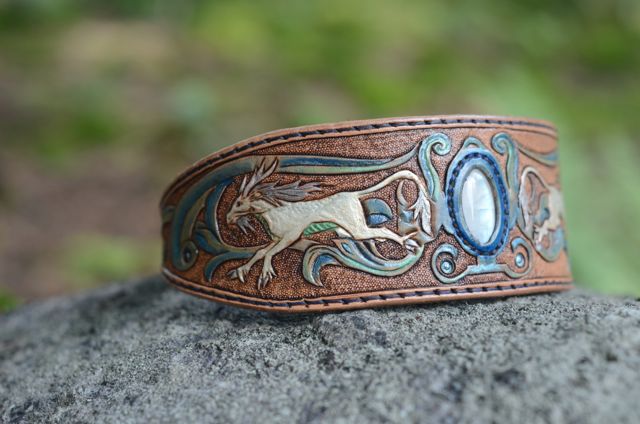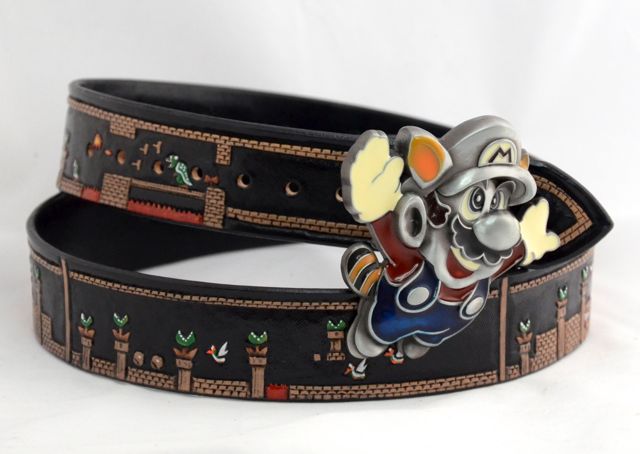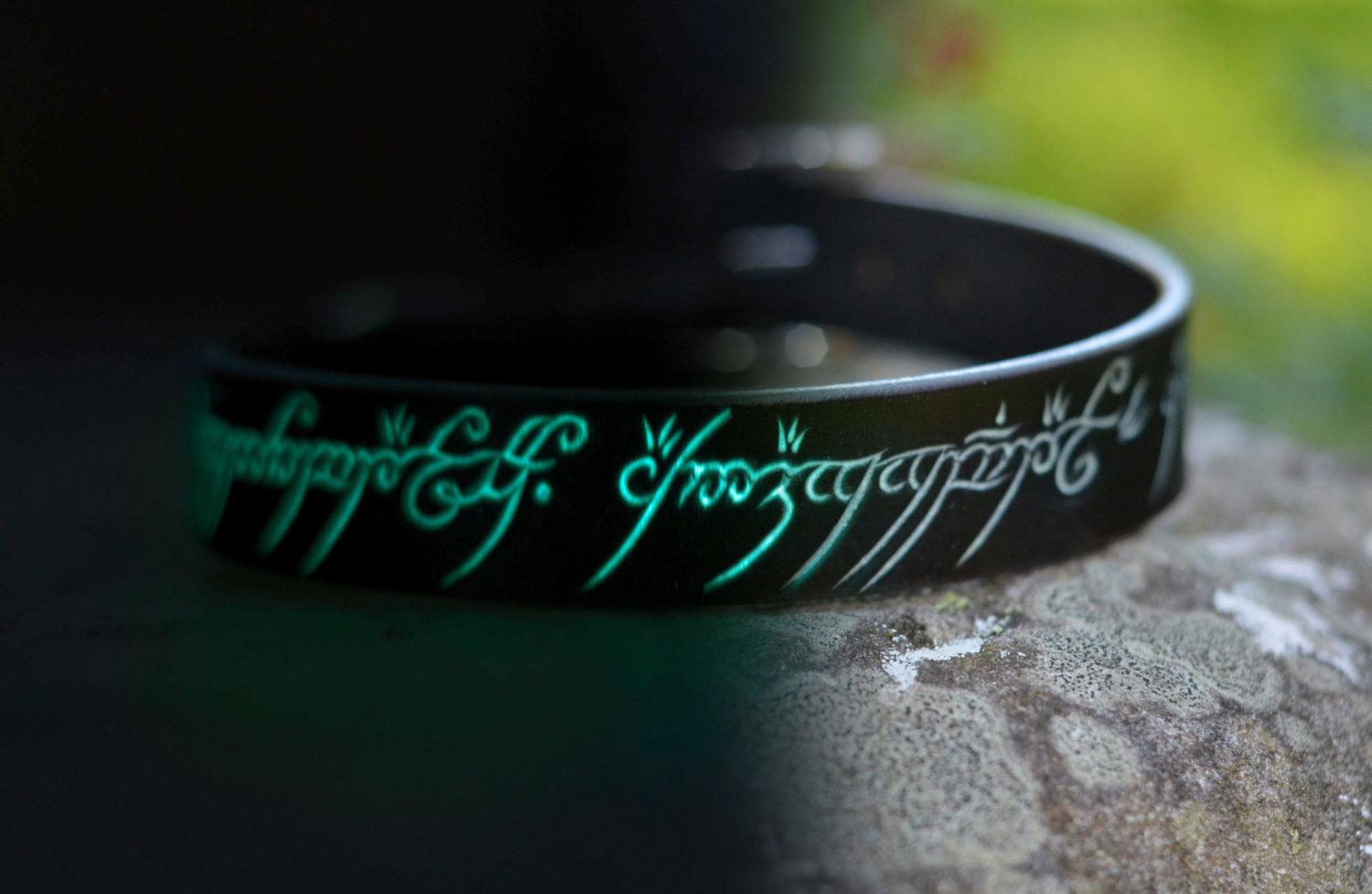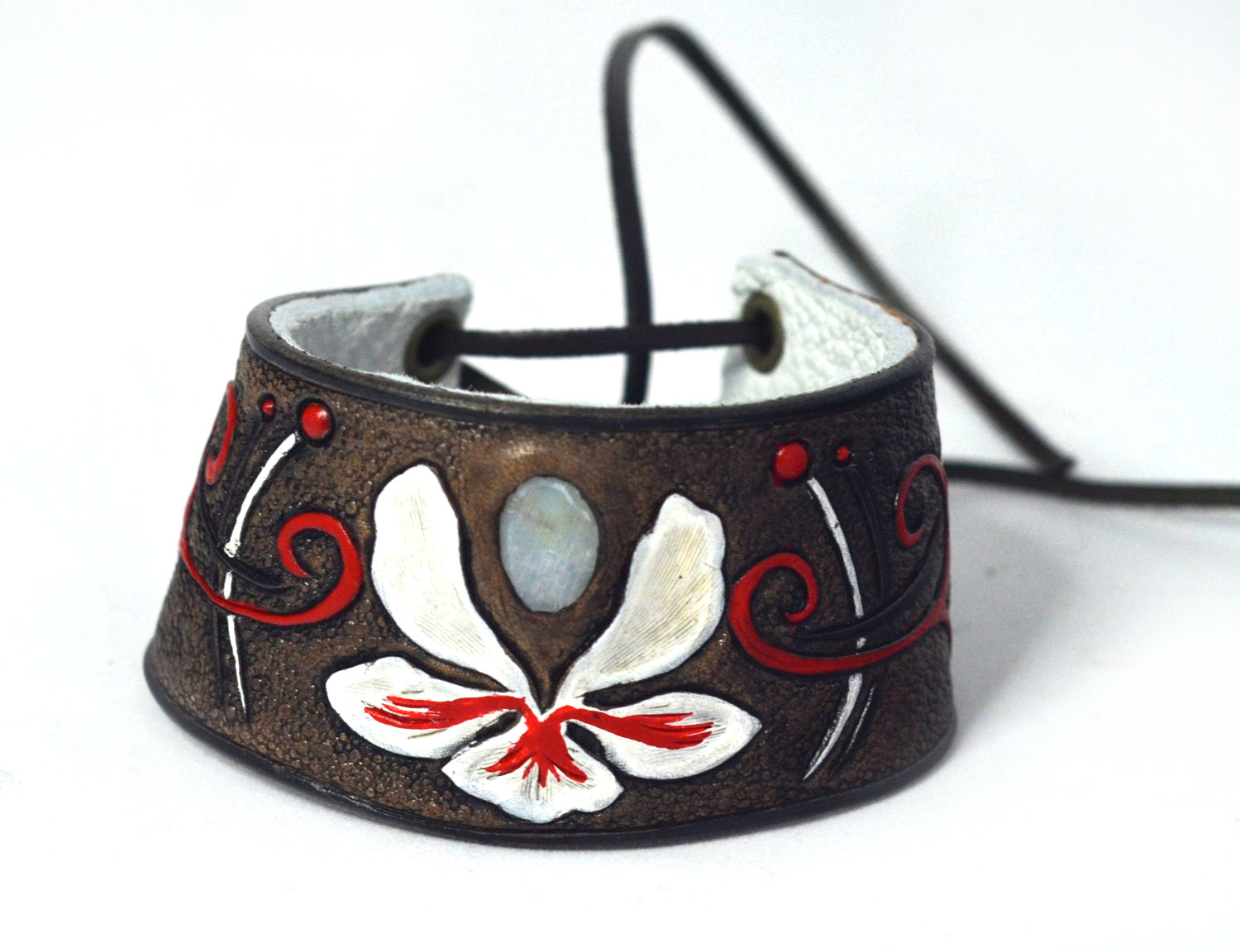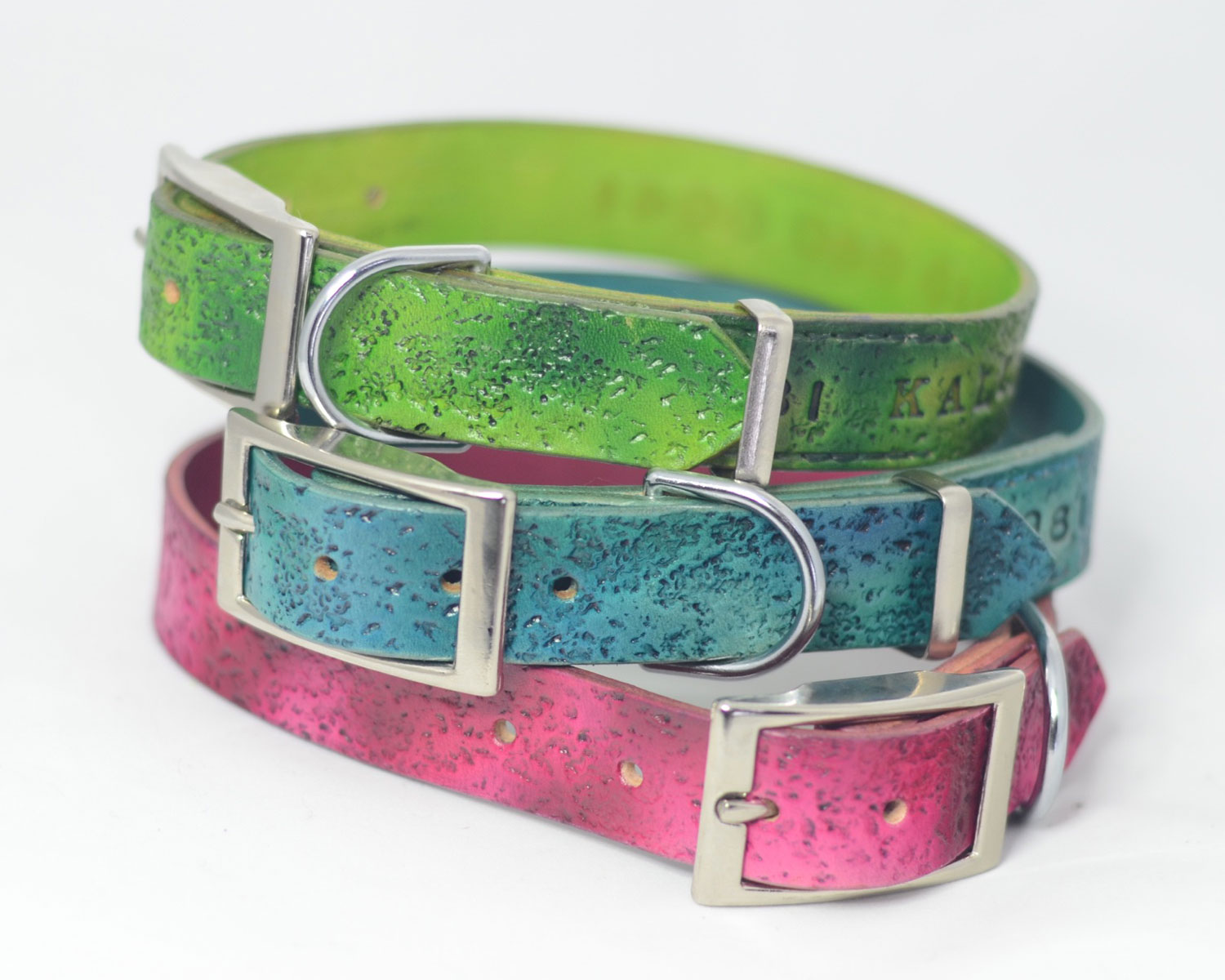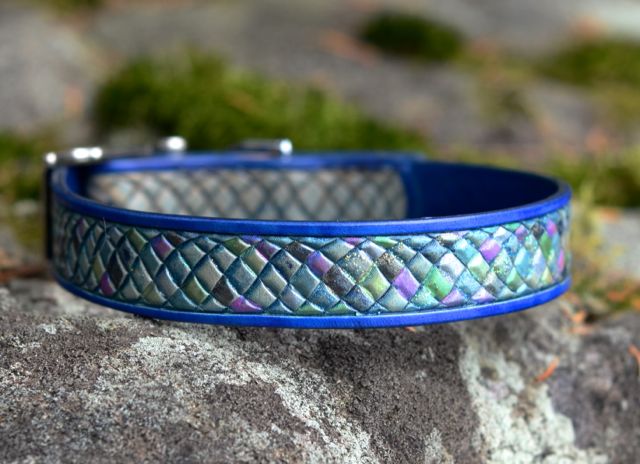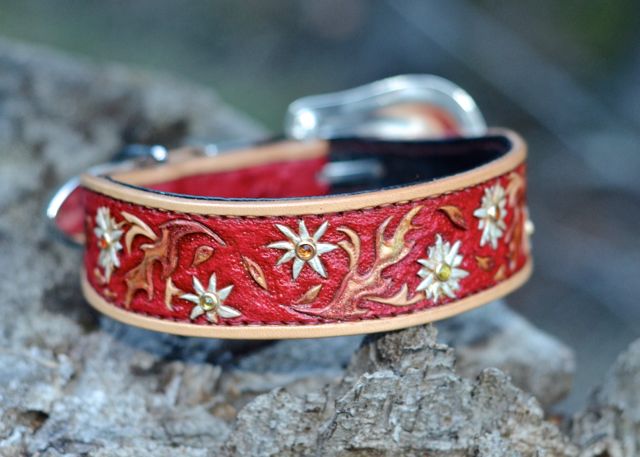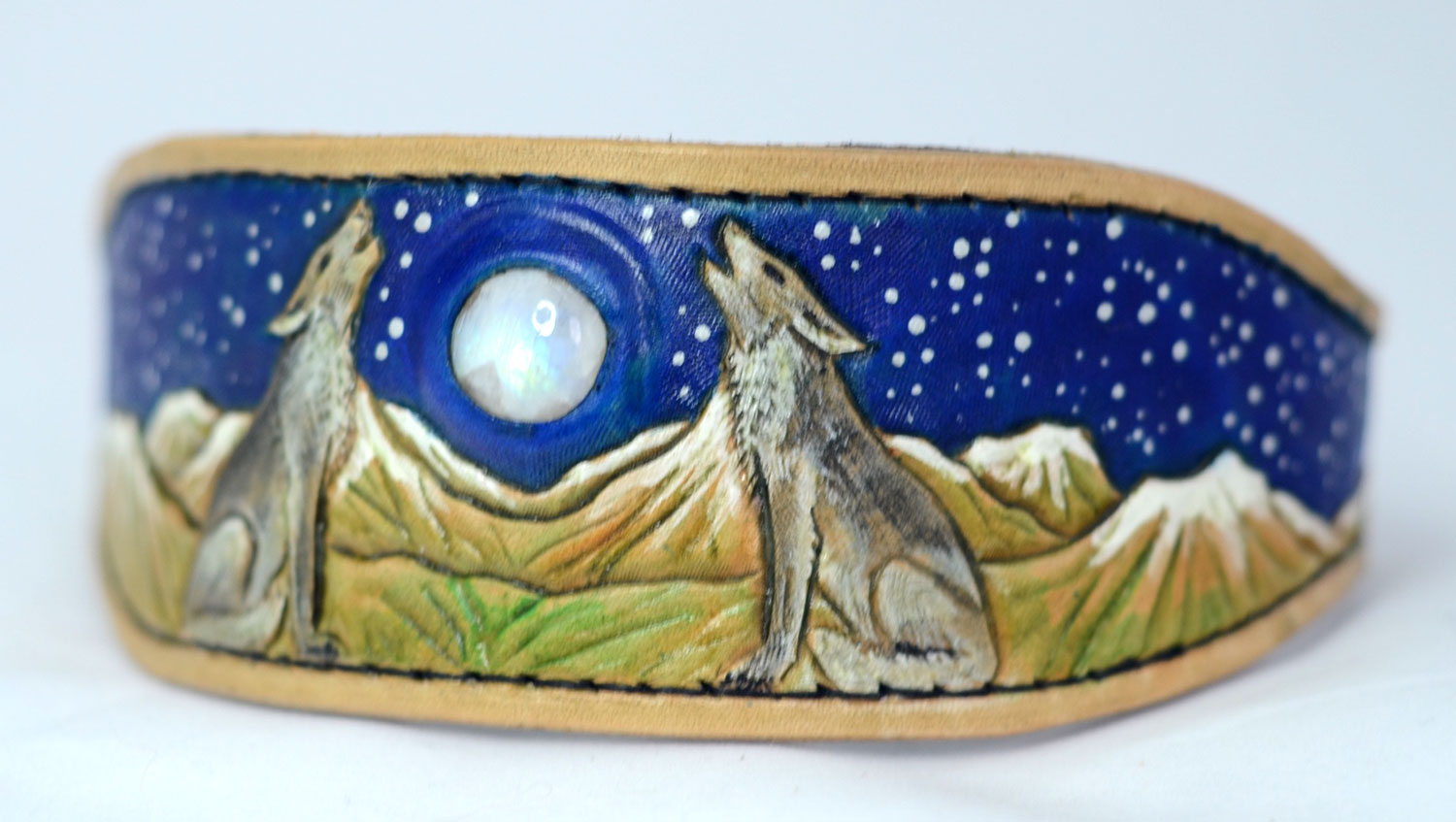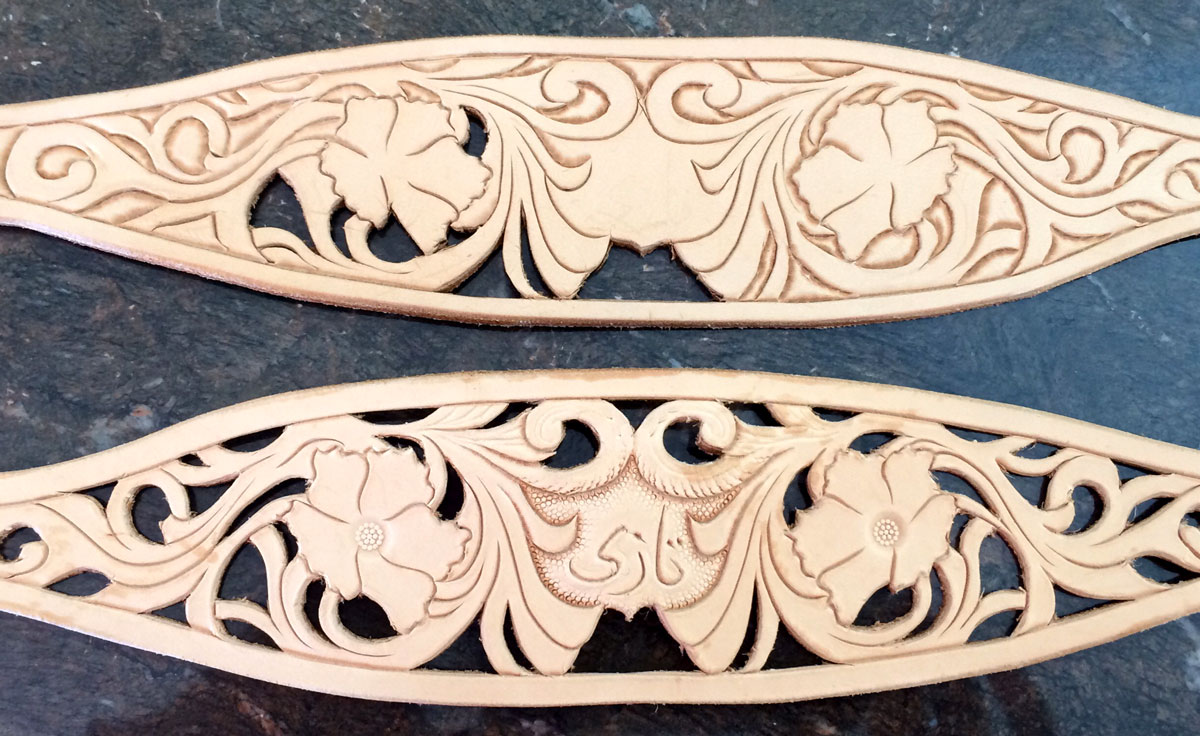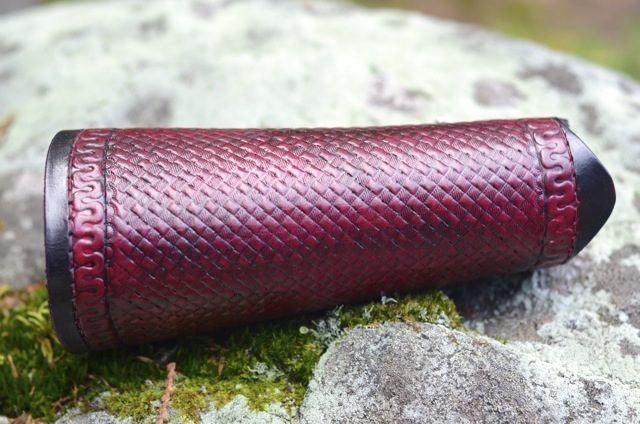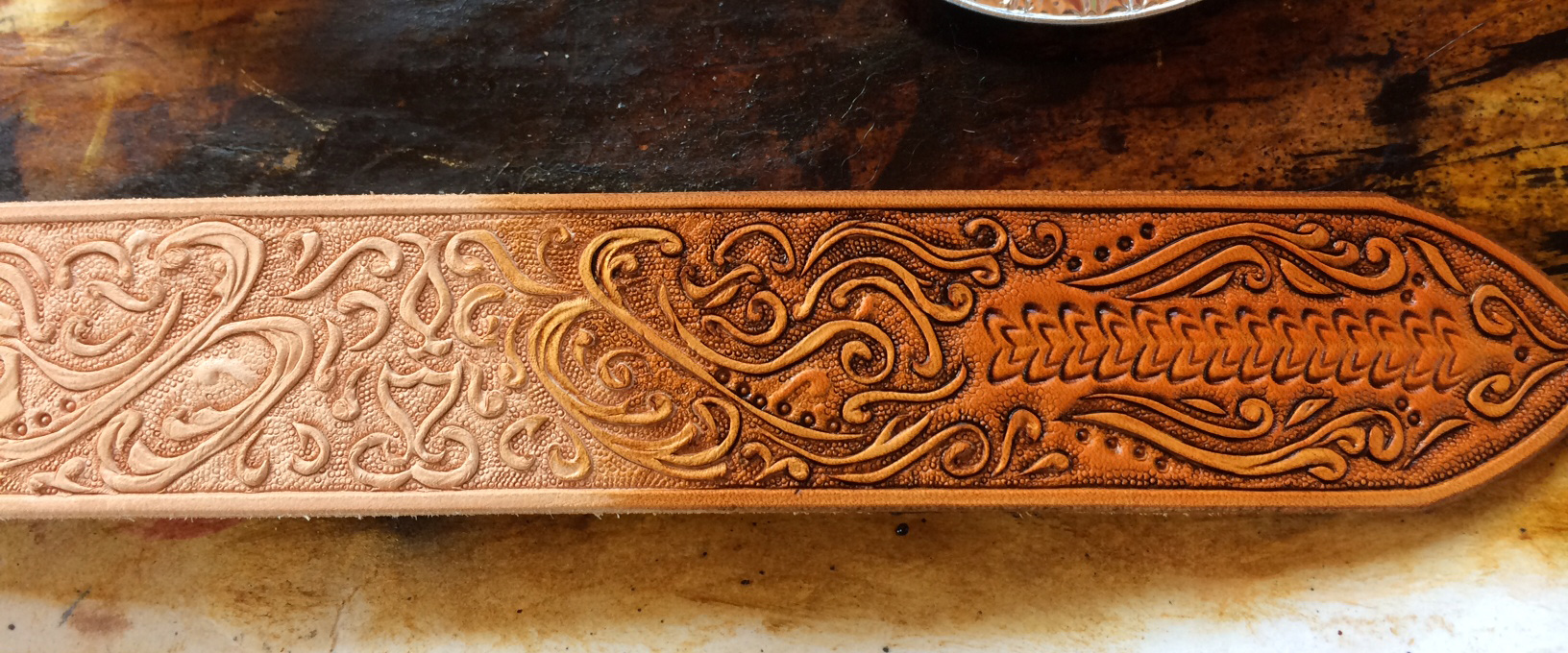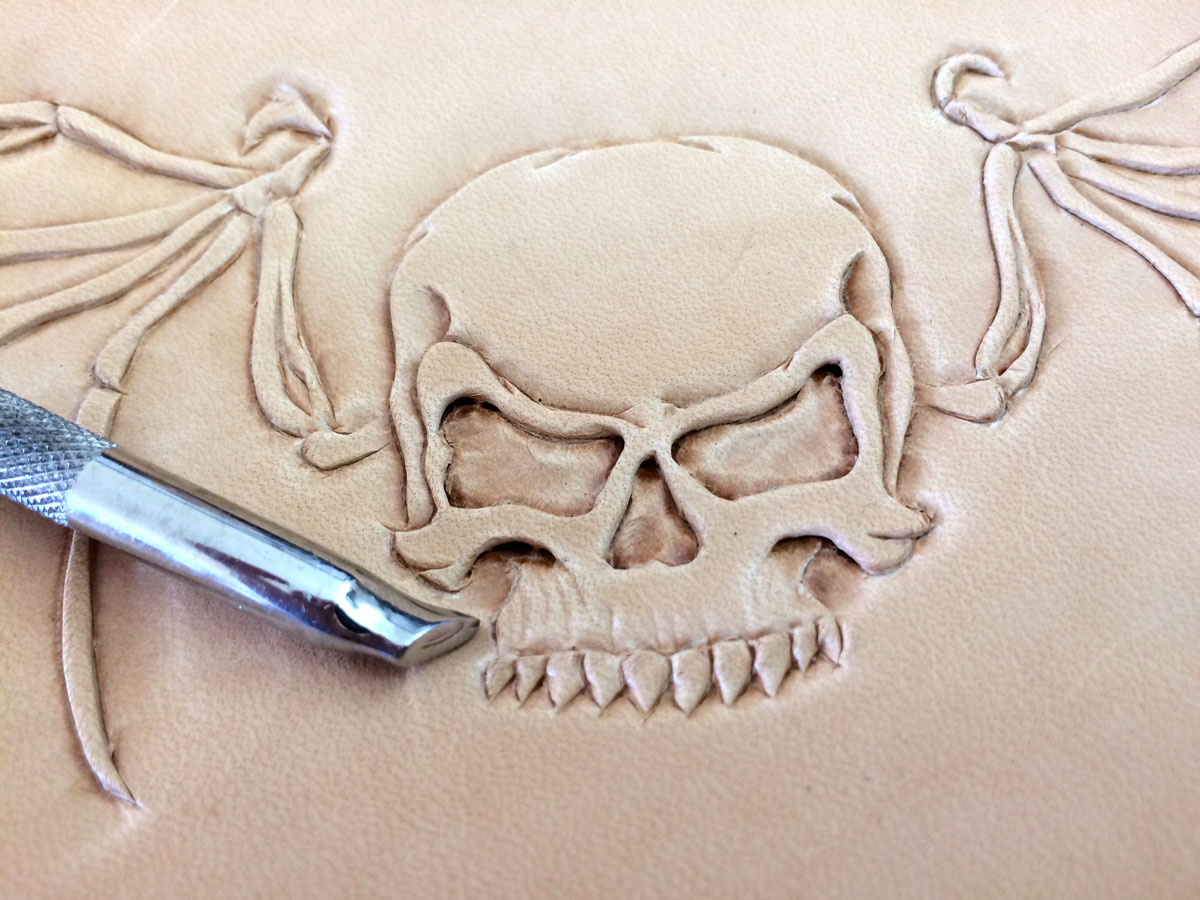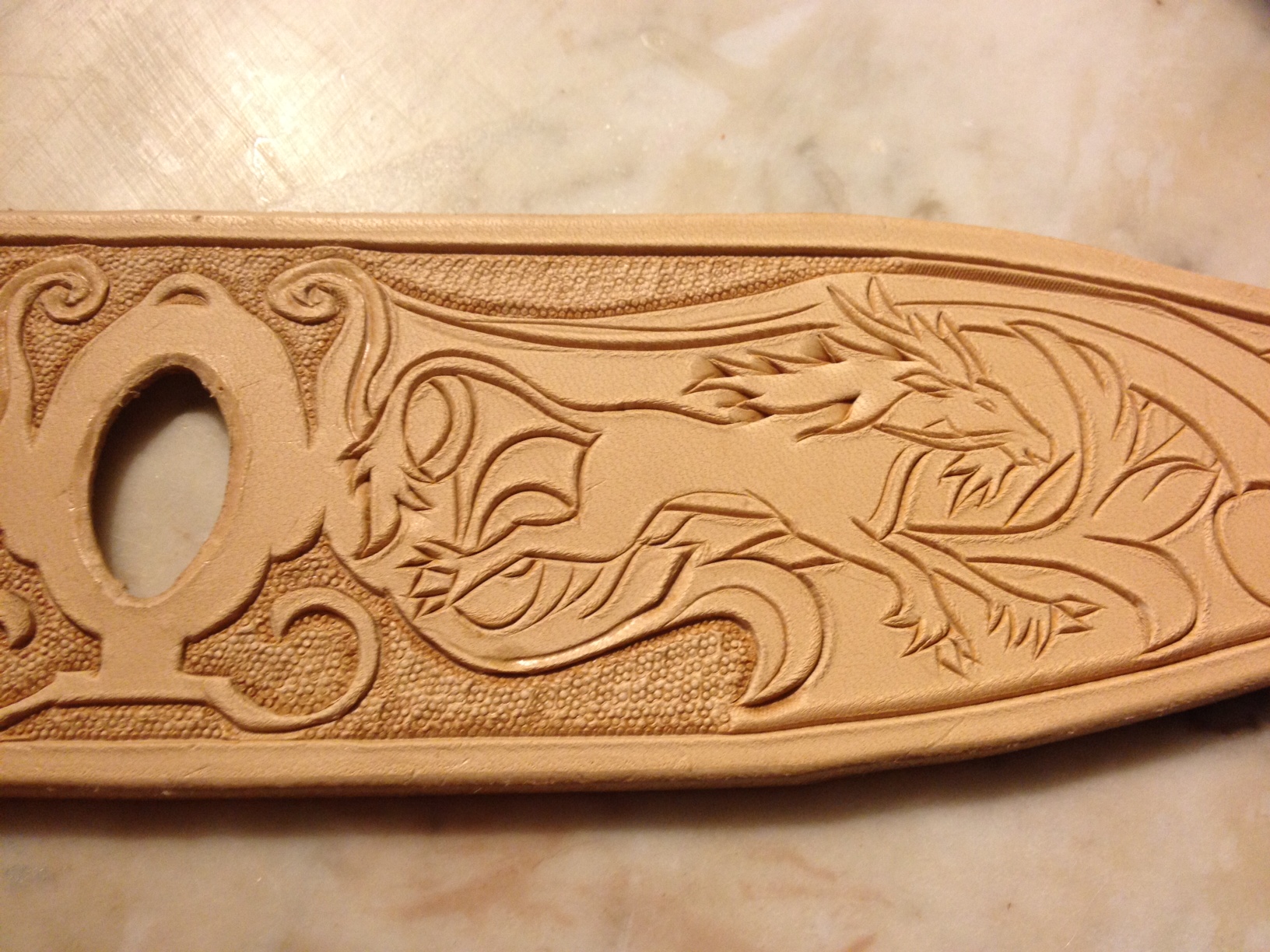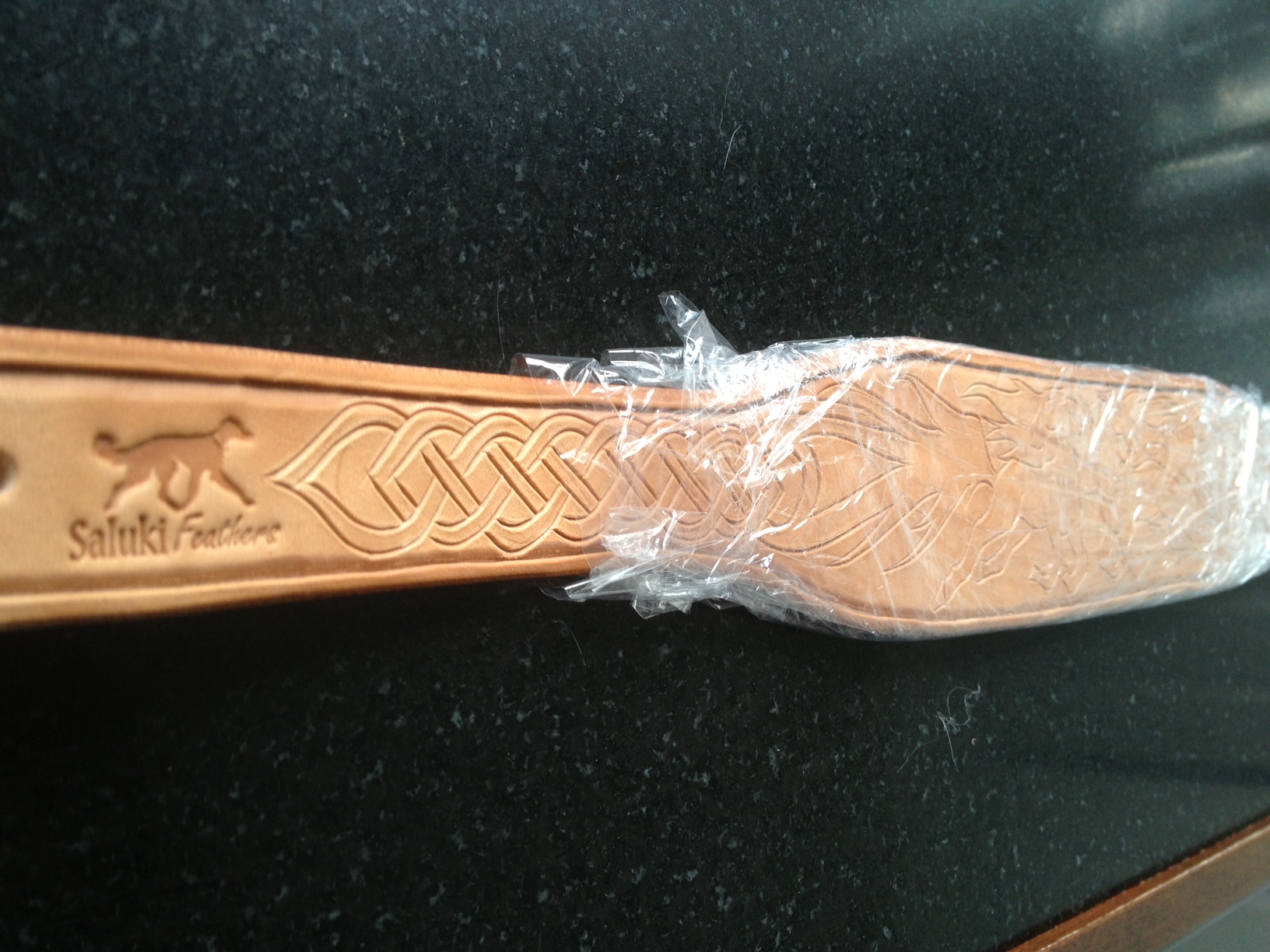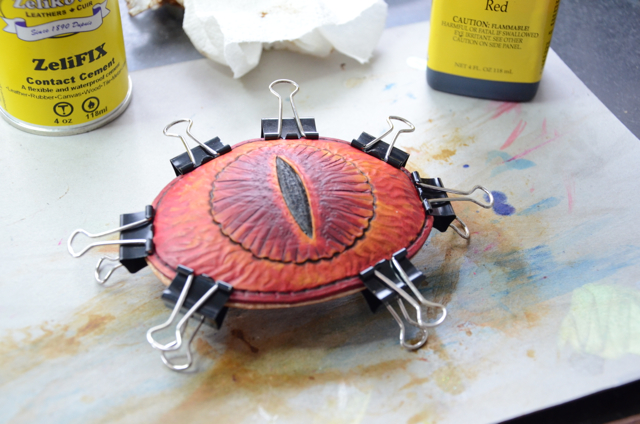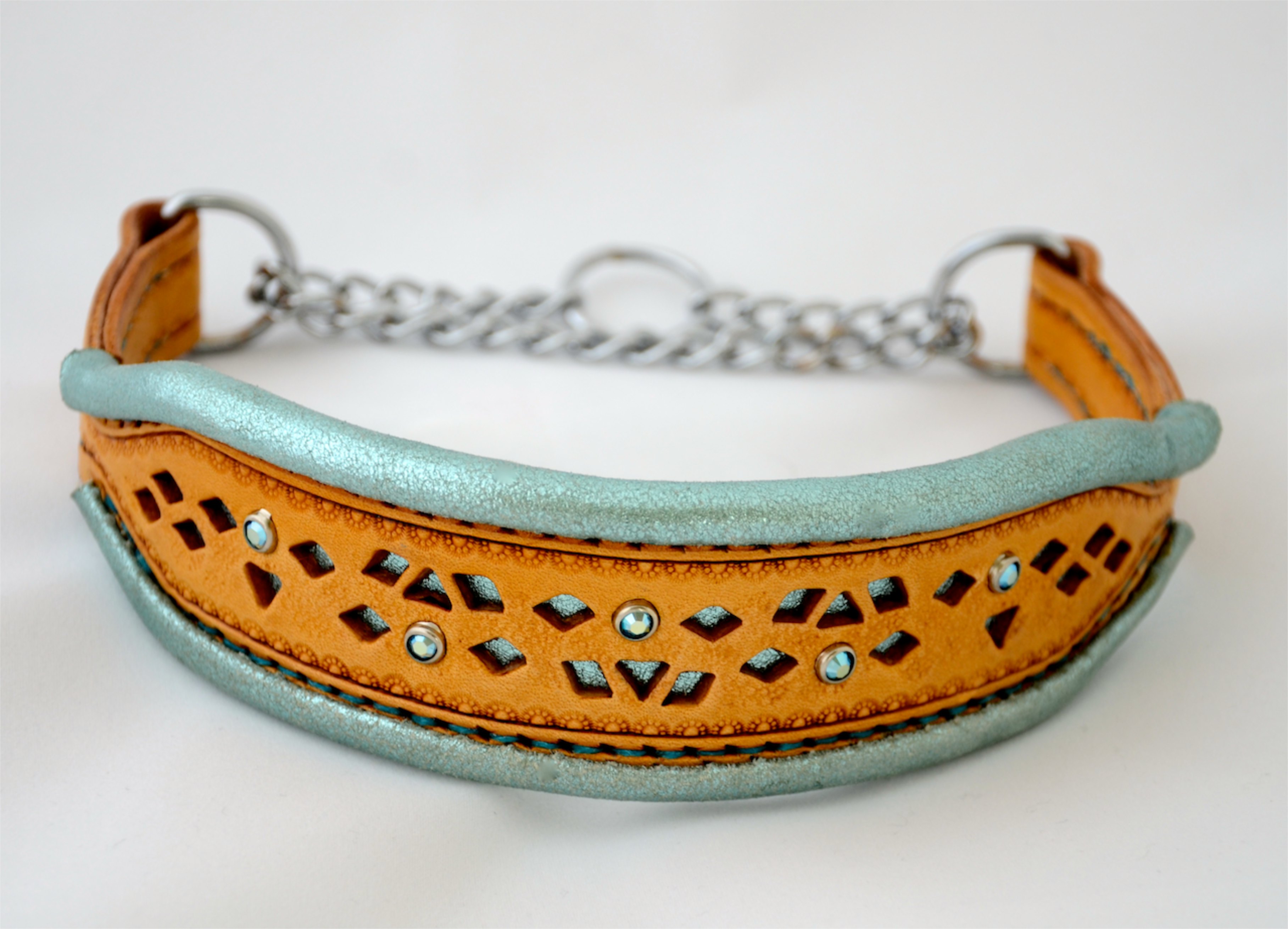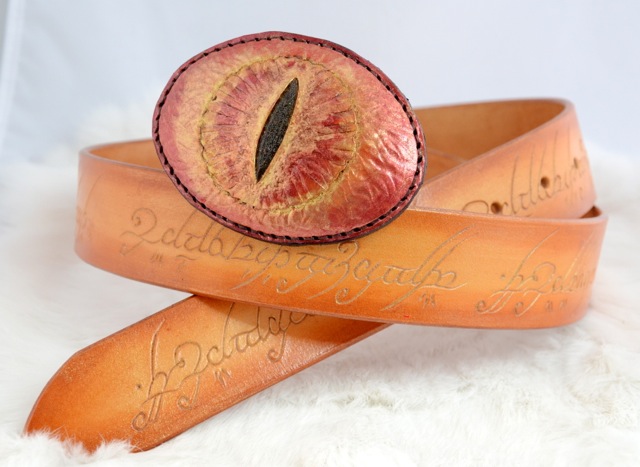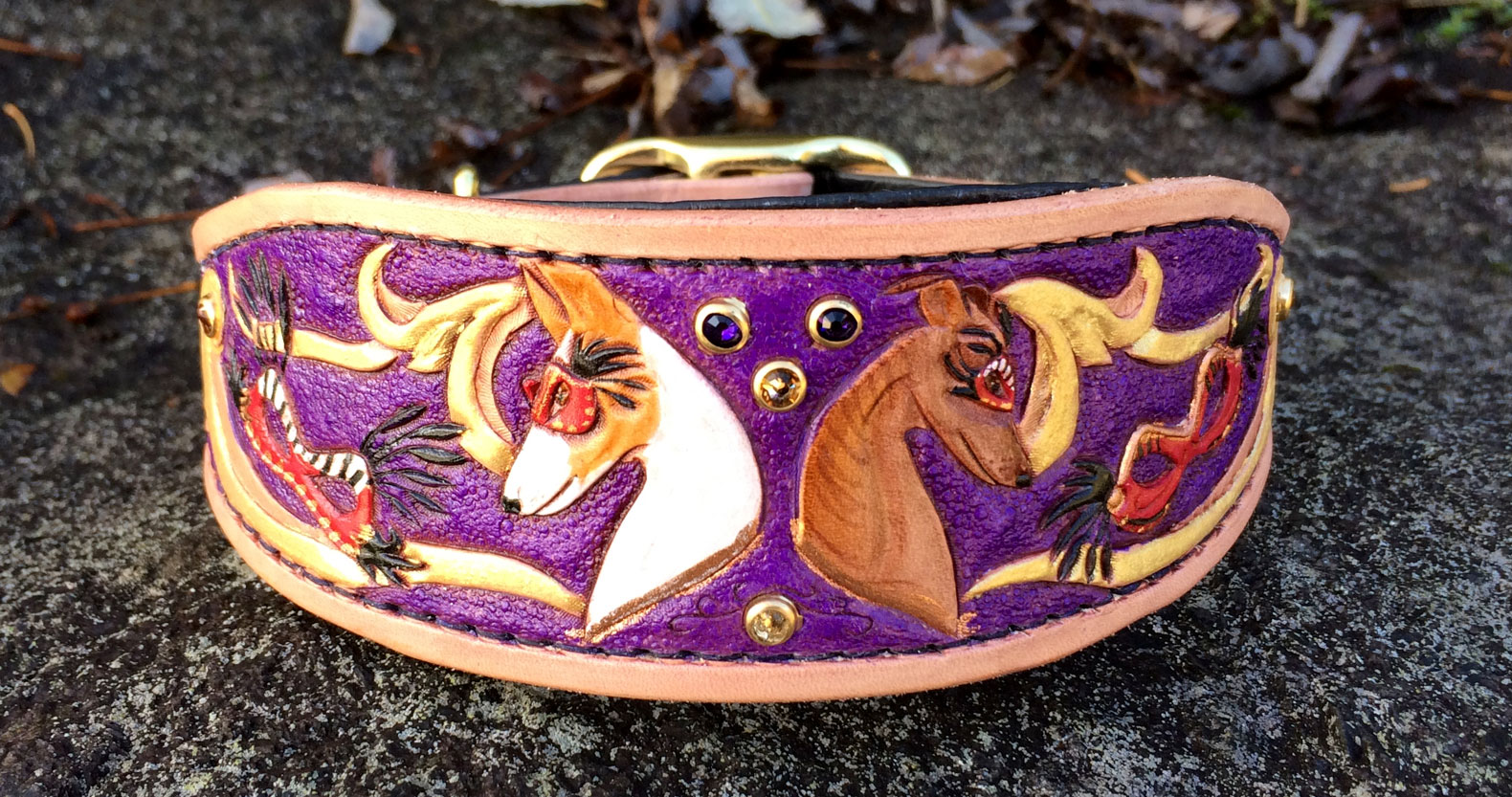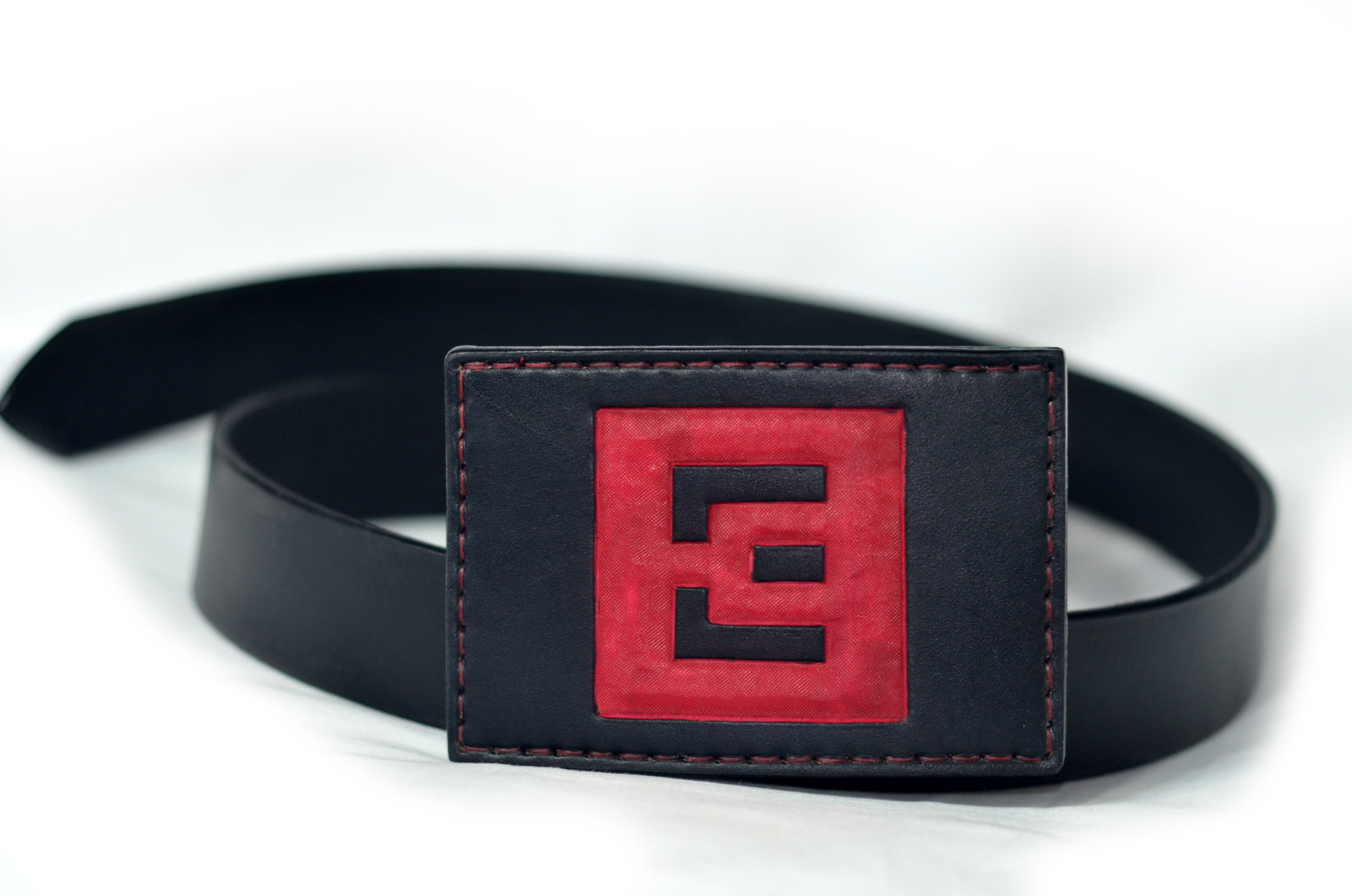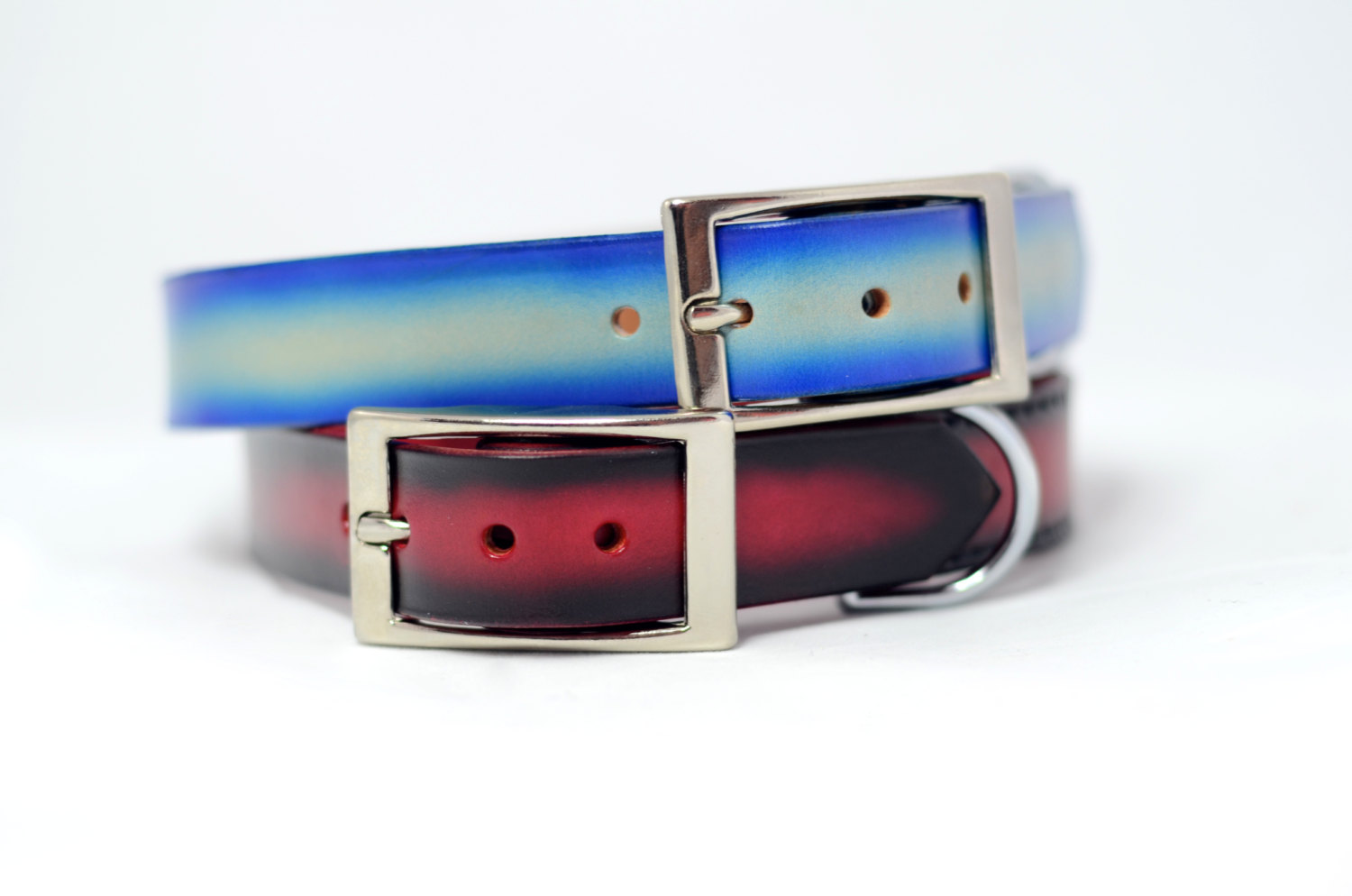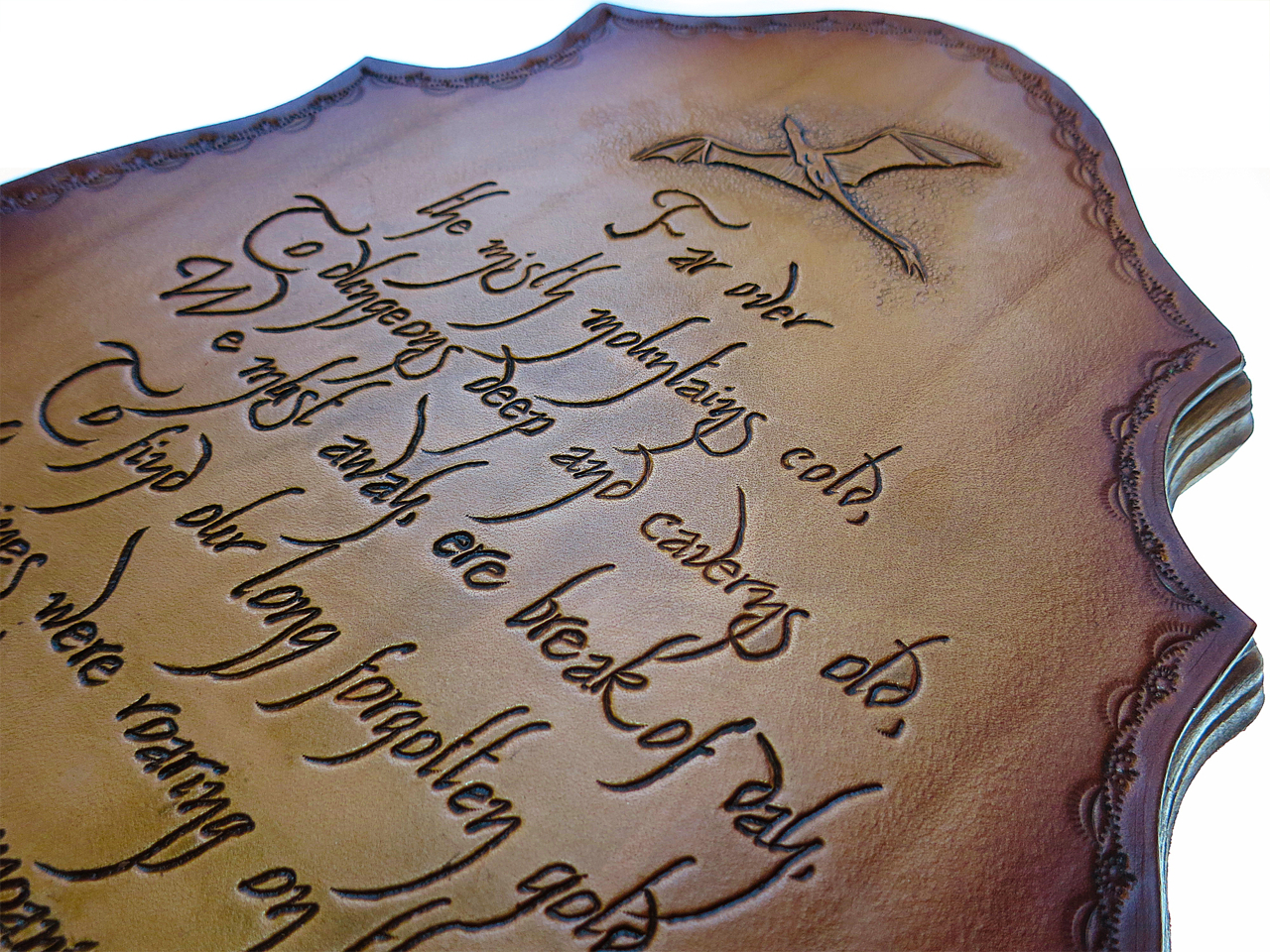
When the shop is open, it has ready-made products in select sizes that are ready to be shipped out within 24 hours! I try to keep a few of the most common sizes available at all times. Please note that the shop is currently closed due to an enormous amount of fraud that has been increasing in the past few years. I’m only currently taking custom orders for friends and family and for some repeat customers.

My name is Julia. I’m a Canadian leatherworker who specializes in detailed tooling/figure carving and incorporating gems and exotic leathers into projects. I’ve been hand crafting and selling leather items since 2012.
Anything that you see on this site can be custom crafted in the size and style that best meets your desires!

